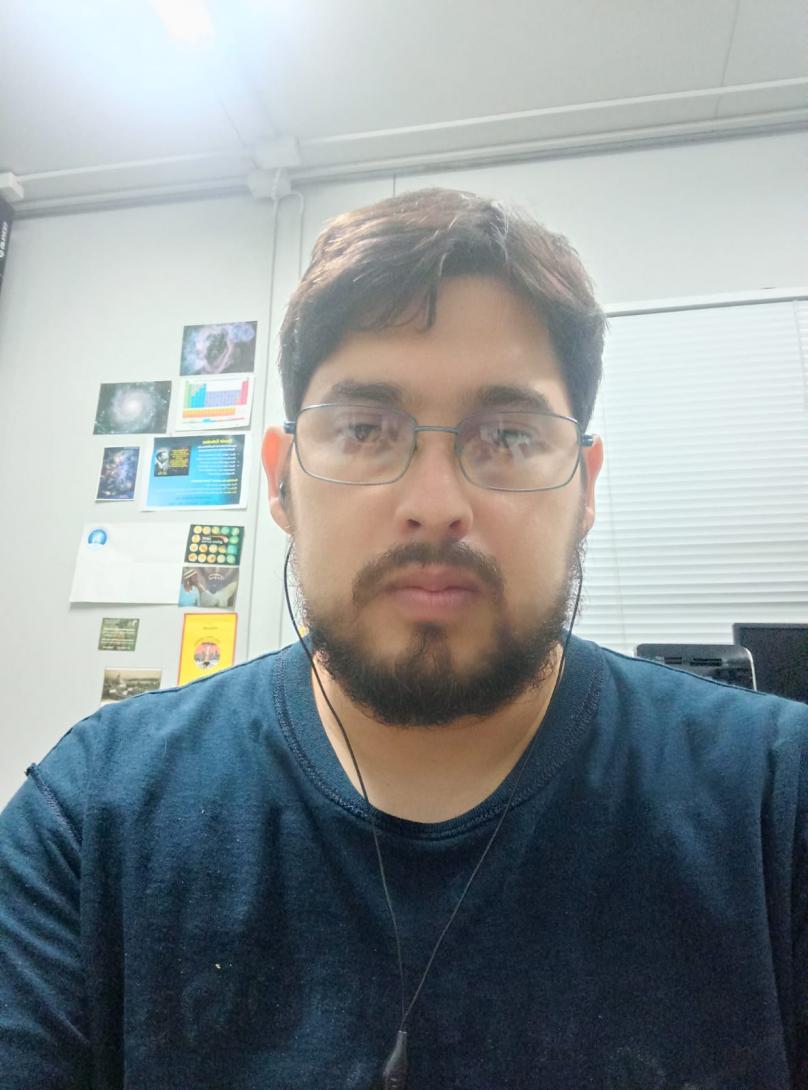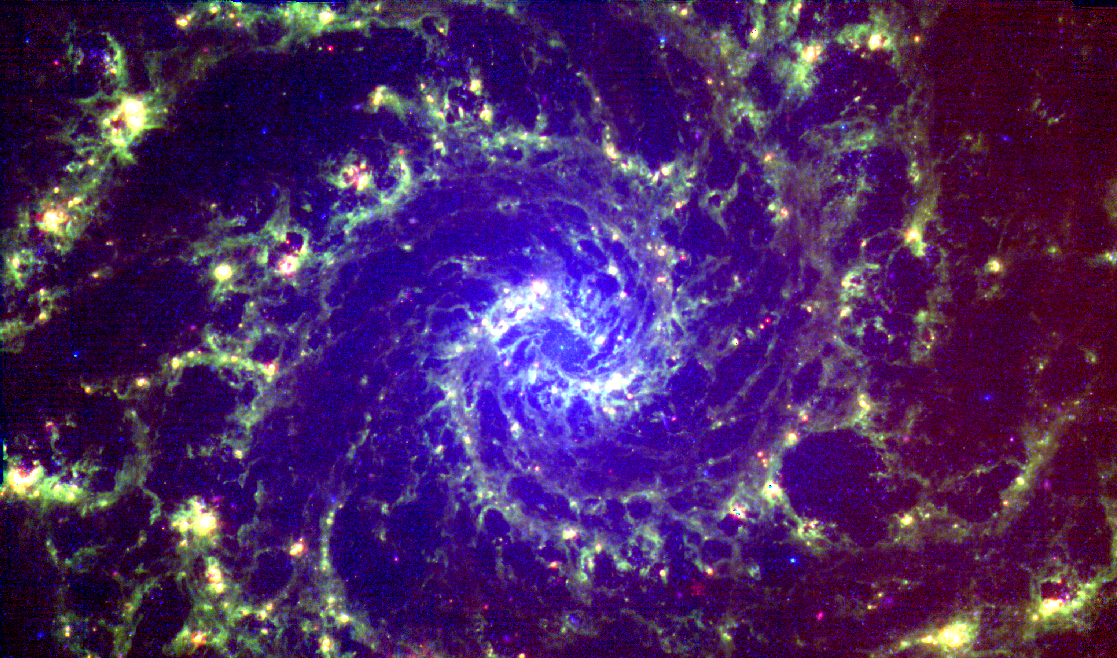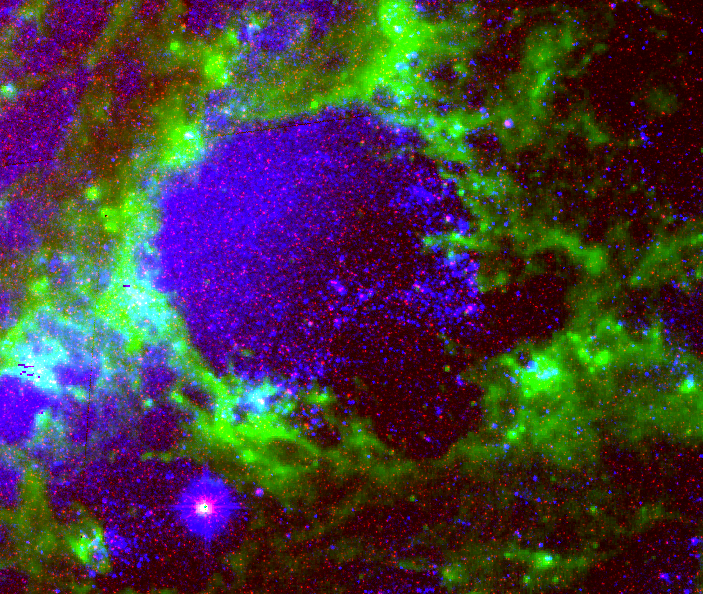INAOE astronomers explain the origin of the holes in the phantom galaxy observed by the James Webb Space Telescope
Santa María Tonantzintla, Puebla, March 9, 2023. Using one of the first images from the James Webb Space Telescope (JWST), which began scientific operations just seven months ago, as well as other instruments, Astronomers from the National Institute of Astrophysics, Optics and Electronics (INAOE) have been able to explain the origin of the holes that give the phantom galaxy its enigmatic appearance.
The results of the investigation, led by Dr. Divakara Mayya, INAOE researcher, are reported in the article "The stellar population responsible for a kiloparsec size superbubble seen in the JWST "phantom" image of NGC 628", which will be published Coming soon to the Monthly Notices of the Royal Astronomical Society.
.jpg)
Dr. Divakara Mayya explains that the phantom galaxy is a spiral galaxy close to us, it is only 30 million light years away. The image taken by the JWST stands out for being full of holes, or hollow areas of matter. Among these, a huge hole stands out whose diameter measures around three thousand light years.
Dr. Mayya relates that “actually the holes are interstellar bubbles, which are formed naturally in star formation zones. Fast winds coming out of stars along with supernova explosions push matter around creating hollow structures surrounded by piled-up matter. What surprised us when we saw the JWST image is how big one of the bubbles was. We wonder why a bubble is so big compared to the others? Is it possible that the big bubble is generated by the same process as the other bubbles? To answer these questions we carried out a detailed study of this great bubble at different frequencies. Stars form in clusters so if it is created by stellar winds and supernovae, we must be able to identify a star cluster to which the dead stars belonged. We put together a team of researchers, all linked to INAOE, with the purpose of finding this supposed cluster.”
Dr. Javier Zaragoza, Conacyt professor at INAOE, explains that “being a nearby and well-known galaxy, it is observed by several scientists using the best instruments and telescopes in the world, such as MUSE on the ESO VLT, ALMA and the Hubble Space Telescope. (HST). We use this data that is available to the community to study hot and cold gas and we all saw this bubble structure, but the bubble stands out better in James Webb's images, thanks to the sharpness and his ability to see infrared waves . We established that the bubble inside is completely hollow of gas and that the matter piled up at the edge of the bubble is predominantly in the molecular phase and is growing in size."

Dr. Luis Lomelí Núñez, a graduate of INAOE and currently a postdoc researcher at the Federal University of Rio de Janeiro in Brazil, was one of those responsible for cataloging all the stars in and around the superbubble with the intention of searching for the supposed responsible cluster: “In astronomy we always want to catalog objects and analyze their colors. In the different filters we can see stars of different ages. For example, in an image taken in the blue filter you can see blue stars, and in a red filter the red stars. We know that blue stars are younger than red stars. By making star catalogs in the images taken by the HST and JWST we can determine the ages of the stars that reside within the bubble.”

Image taken by JWST of the ghost galaxy (NGC628), which lies at a distance of 30 million light-years. The image is notable for showing many holes, with the largest hole reaching a size of 3000 light-years. The INAOE group studied this large hole to understand the mechanisms that create holes in this galaxy. They found that the big hole is actually an interstellar bubble that is growing at a rate of 12 kilometers per second. All the matter that was inside the bubble was piled to the edge of the bubble. Design: Divakara Mayya. Credit: James Webb Space Telescope.

Bubbles form when stars that are more than 10 times the mass of the Sun explode as a supernova. If this were the reason for the creation of the giant bubble in NGC628, we should be able to identify blue stars within the bubble. We supplemented the JWST images with those from the HST to look for these blue stars. The figure confirms the detection of these blue stars. The number of stars detected indicates that hundreds of supernovae have exploded within the bubble in the last 50 million years and that the energy released from these stars is sufficient for the creation of the bubble. It is the first time that the stars responsible for the creation of the bubble have been found. Design.: Divakara Mayya. Credit: James Webb Telescope and Hubble Space Telescope.
Dr. Jairo Alzate, postdoctoral researcher at INAOE, elaborates: “Based on the images of the bubble area, in different filters or wavelengths, five samples were selected. The sample of the bubble and four samples where the bubble is not, to contrast between the population of stars that is inside the bubble and the population outside it. The star catalog we created gave us the brightness in the blue and red filters of the HST. When we have brightness in two different filters, the stellar color is calculated -difference between brightness- and the luminosity -brightness corrected for distance. They are then plotted on a Cartesian diagram and compared to theoretical models of stellar evolution, which can predict the expected luminosity and color of a star at any age. This is a classic method to determine the age or evolutionary stage of stars, and through it we find that inside the bubble there is a blue and bright population, which would indicate a younger population compared to the four reference samples. With this information we were able to estimate the history of star formation within the giant hole of NGC 628. We observe that all the stars located inside the bubble are not the same age, but that their ages vary between 5 and 50 million years. This age interval is the right age for supernova occurrences, so the search for the stars that gave rise to the bubble ended successfully."
Dr. Divakara Mayya summarizes: “We found the stars responsible for creating the vacuum inside the bubble. However, these stars do not belong to a cluster as we expected, but are widely scattered in space. The idea that we proposed to explain this is that it all started with the formation of some stars in the center, and when some of these died as supernovae they began to push the gas around them, this stacked gas formed a second generation of stars. These new stars dying as supernovae started a third wave of star formation. The cycle of star formation, supernova explosions, and gas stacking continued for 50 million years, emptying out all the gas inside and filling this space with stars. This scenario that we proposed is not so common, because it has been widely argued that dying stars form new stars but only once, and here we are proposing that this process went on in a coordinated manner for several cycles over 50 million years for grow the bubble to the current size”.
For more details of this work you can consult https://arxiv.org/abs/2302.12704
Luis Enrique Erro # 1, Tonantzintla, Puebla, México, Código Postal 72840, Tel: (222) 266.31.00, difusion@inaoep.mx
This work is licensed under a Creative Commons Attribution-NonCommercial-NoDerivs 2.5 Mexico License.


